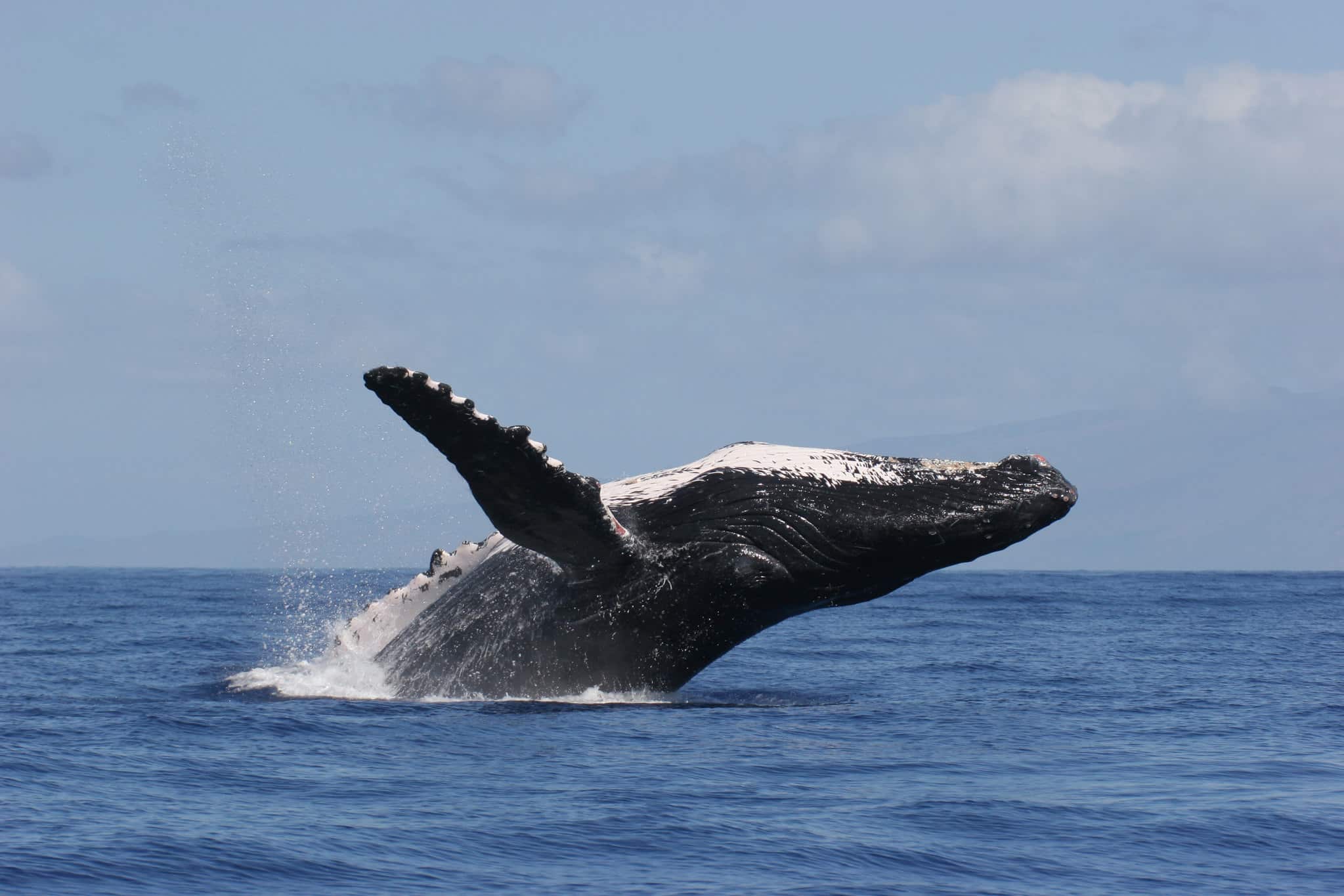Wondering what went right this week in the conservation world? We’ve got you covered with our Conservation Optimism Round-Up! We are collating stories of optimism from around the globe so that you never miss your dose of weekly motivation.
(Image Credit: HIHWNMS/Office of National Marine Sanctuaries, Flickr)
1. After 600 years of absence, the Aldabra Giant Tortoise returns to Madagascar
“A six-year-old project to return giant tortoises to the wild in Madagascar could result in thousands of the 350kg megaherbivores re-populating the island for the first time in 600 years.
“The first group of Aldabra giant tortoises (Aldabrachelys gigantea) were brought in from the Seychelles in 2018, and have been reproducing on their own since. A group of ecologists explain how reintroducing this tortoise to areas degraded by cattle grazing will help restore the island’s forests, grassy woodlands and shrublands of the past. It could also help prevent devastating forest fires in future.”
Thanks to #conservation efforts, the #reintroduction of 12 individuals of Giant #Tortoise to #Madagascar in 2018 has been deemed a success, with a current population of approximately 152 individuals! 🐢#conservationoptimism #LetNatureThrive https://t.co/AqgaRRF6dA
— Global Conservation Solutions (@_GCS_) April 2, 2024
2. Hertfortshire’s River Stort given new lease of life in £25m rewilding project
“The River Stort, a chalk stream in Hertforshire, is set to undergo restoration efforts following a government grant issued to the Hertfordshire and Middlesex Wildlife Trust. […] “The main bulk of money will be on capital work for the rivers,” river catchment coordinator Sarah Perry said. “We have work in progress on 11.5 km of our chalk rivers.”
University of Oxford’s Leverhulme Centre for Nature Recovery researcher Thomas Atkins said that although the funding allocation is “a positive initiative”, offering 20 projects a share of £25m is “not enough” to achieve the government’s legally binding target to halt the decline in species abundance by 2030.
“From a biologist’s perspective, we need a systematic change in the way we manage and develop in the countryside to have any chance of succeeding at this,” he commented.
"The Stort is our name, our heritage. I can’t imagine not having it here, so if there’s something to change, to keep it alive for us, I’m very glad to hear that."https://t.co/Nxn5C7kt19#rewilding #conservationoptimism
— Citizen Zoo (@CitizenZoo) April 3, 2024
3. New Brunswick, Canada, to reward farmers for conservation efforts
“A new program is encouraging farmers in New Brunswick to leave part of their lands for conservation. The Resilient Agricultural Landscape Program uses Canadian provincial and federal funding to reward farmers for leaving sections of their farms untilled and protecting waterways, wetlands and pollinator habitats.
“This program will help incentivize farmers to further enhance their environmental stewardship for the benefit of everyone,” New Brunswick Agriculture Minister Margaret Johnson said.”
A new program is encouraging farmers in New Brunswick to leave part of their lands for conservation. The program follows similar efforts in Nova Scotia and Prince Edward Island. https://t.co/9GnDEPC5ni
— The Wildlife Society (@wildlifesociety) April 5, 2024
4. Conservationists announce exciting new head count for vulnerable wild tigers
“… After years of successful conservation efforts, the world population of tigers is on the rise, growing steadily closer to achieving a goal set in 2010 to double the population of tigers on the planet, the World Wildlife Fund reports.
We aren’t quite there yet. But thanks to policies and programs that have protected and restored tiger habitats, as well as advancements in monitoring and other conservation efforts, the population has increased by 74% as of last September. There are now about 5,574 wild tigers, according to the Global Tiger Forum.
“Even if the progress has been uneven and is still extremely fragile, the fact that many tiger populations are recovering is extraordinary conservation,” said the WWF in its statement.”
Thanks to #conservation efforts, the world population of #Tigers is rising, with a 74% increase (approx. 5,500 individuals) of the overall population since 2010! 🐅#speciesrecovery #speciessuccess #conservationoptimism #LetNatureThrive https://t.co/pXNDogG83h
— Global Conservation Solutions (@_GCS_) April 6, 2024
5. A quick look back at this year’s eco-conscious Holi Day celebrations in India
In March, India celebrated a more environmentally-friendly version of their iconic Holi Day celebrations, thanks to initiatives led by young people across the country. “Gen Z, who are becoming known for their more conscientious habits as well as breaking from traditions that don’t work for them, are weaving modern, innovative and eco-conscious elements into the Holi traditions. […] This is a shift that began a few years back, with millennials swapping Holi powders for flowers or herbal colours.”
Beyond environmentally-friendly alternatives to the colored powders, young people are also encouraging sustainable shopping practices, as well as kindness and respect for fellow festival-goers and animals impacted by potentially toxic materials in the paint powders.
How eco-conscious Gen Z are celebrating Holi in India https://t.co/MPc0ZScAq9
— BBC Culture (@BBC_Culture) March 26, 2024
6. California Wildlife Department stops commercial crab fishing to protect migrating humpback whales
“With humpback whales heading back to their feeding grounds off coastal California and gray whales migrating north to Alaska, the California Department of Fish and Wildlife announced it will close the commercial and recreational Dungeness crab fisheries in southern and central fishing zones next week to reduce the risk of entanglements.
Great story by @lagunaini via @ocregister on the latest developments in California to prevent whales from becoming entangled and injured in vertical fishing lines in the commercial Dungeness crab fishery. #WhaleSafeOceanshttps://t.co/nP19cLkRfr
— Oceana Pacific (@Oceana_Pacific) April 8, 2024
7. The rewilding project restoring Scotland’s southern uplands and inpiring the nation
Hear from biologist Ben Martynoga, who has been a part of the community-led Carrifran Wildwood project since it first took root in January 2000.
“Nearly a quarter of a century and 750,000 planted trees later, the project is achieving ecological lift-off. The valley is now shaggy with diverse native trees. Freed of grazing pressure, wildflowers are flourishing […] On the high ground, peatbogs are healing and rare arctic-montane scrub and heath are thriving. The whole place now echoes with birdsong …”
Peter Cairns, the executive director of Scotland: The Big Picture, agrees. “Pioneering rewilding initiatives such as Carrifran demonstrate that rewilding is for everyone and delivers benefits to people as well as nature and climate,” he says”
They come here for practical knowhow and an injection of hope. “I just love seeing the excitement on people’s faces,” says Wilson. “They look at the valley and just go, ‘Wow!’”https://t.co/LIcVrPJUse#conservationoptimism #rewilding
— Citizen Zoo (@CitizenZoo) April 1, 2024
Have a story to share for our weekly round-up? Use #ConservationOptimism on Twitter, Facebook, LinkedIn and Instagram!


